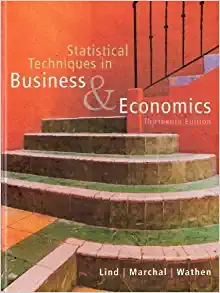Question
4. Compute the Banzhaf power of each voter in the V(14;9,7,5,3,1) and V(13;9,7,5,3,1) (see 19.3 and 19.4 in book) 19.4 Power of the States If
4. Compute the Banzhaf power of each voter in the V(14;9,7,5,3,1) and V(13;9,7,5,3,1) (see 19.3 and 19.4 in book)
19.4 Power of the States
If the primary target of our study is the Electoral College, we should endeavor to compute the Banzhaf power of each of the states in order to check whether there are the kinds of curious anomalies that one finds withV(12;4,4,4,2,2,1) or withV(51;50,50,1). But this task is easier said than done. The Electoral College voting method has 51 voters, and so the number of coalitions is 251= 2,251,799,813,685,248, which is a large number. As a result, even the fastest computers cannot compute the exact Banzhaf power of a state in a reasonable time.
So we adopt the following approach to approximating the power of the states in the Electoral College system. The actual numerical Banzhaf power of each state will be a number in the trillions. What interests us is not the precise magnitude of this number but the ratio of two of these numbers. For example, we may wish to focus on the states of California, with 55 electoral votes, and South Dakota, with 3 electoral votes. The
370The Mathematics of Politics
ratio between these numbers is 55/318.33. We'd like to estimate the ratio between their Banzhaf powers. If this number should turn out to be close to 18.33, then we will conclude that the Electoral College accomplishes what it seems to. If this number should turn out to be far from 18.33, then we have an indication that the Electoral College does not apportion influence as we expect it to.
The ratio of the Banzhaf power of California to the Banzhaf power of South Dakota is equal to the ratio of two probabilities, the probability that a randomly chosen coalition will have California as a critical mem- ber divided by the probability that a randomly chosen coalition will have South Dakota as a critical member. Unfortunately, we cannot compute these theoretical probabilities exactly, owing to limitations of comput- ers. Instead, we estimate these theoretical probabilities with empirical probabilities, by repeatedly sampling from randomly chosen coalitions and counting how often each state is a critical member. This approach is known as aMonte Carlo simulation, because it introduces ran- domness, like the machines in the casinos in Monte Carlo, to estimate a quantity whose exact value is inaccessible owing to computer limitations.
We present the results of this simulation in Table 19.3. There we list the 51 voting jurisdictions in the Electoral College, with the number of electoral votes for each jurisdiction and the probability that each juris- diction is a critical member of a randomly selected coalition. This proba- bility was estimated by a computer program that selected 1,000,000,000 coalitions at random and counted how many times each state was a crit- ical member. The probability in Table 19.3 is this number divided by 1,000,000,000, rounded to the nearest hundredth.
For example, in our simulation, California was a critical member of 235,472,993 of the 1,000,000,000 randomly selected coalitions. We there- fore put 23.55% as our estimate of the probability that California is a critical member. By contrast, South Dakota was a critical member of just 11,310,640 of those 1,000,000,000 coalitions. Hence we estimate the probability that South Dakota is a critical member to be 1.13%. As ex- pected, and as fairness demands, California has more power in the Elec- toral College system than does South Dakota. And the Banzhaf analysis measures the advantage of California over South Dakota numerically: California is 23.55/1.1320.84 times as powerful as South Dakota in the Electoral College.
The data reveal no surprising anomalies. There are no dummies. Whenever a state has more electoral votes than another, it has more power as well. Maryland has twice as many electoral votes as West Vir- ginia, and it has almost precisely twice the power as well. Indeed, it can be seen that the probabilityPhere depends on the number of electoral votesEapproximately according to the formulaP=E/250. That this Weighted Voting371
Table 19.3The number of electoral votes of each of the 51 voting ju- risdictions and the estimated probability of being a critical member of a winning coalition.
Step by Step Solution
There are 3 Steps involved in it
Step: 1

Get Instant Access to Expert-Tailored Solutions
See step-by-step solutions with expert insights and AI powered tools for academic success
Step: 2

Step: 3

Ace Your Homework with AI
Get the answers you need in no time with our AI-driven, step-by-step assistance
Get Started


